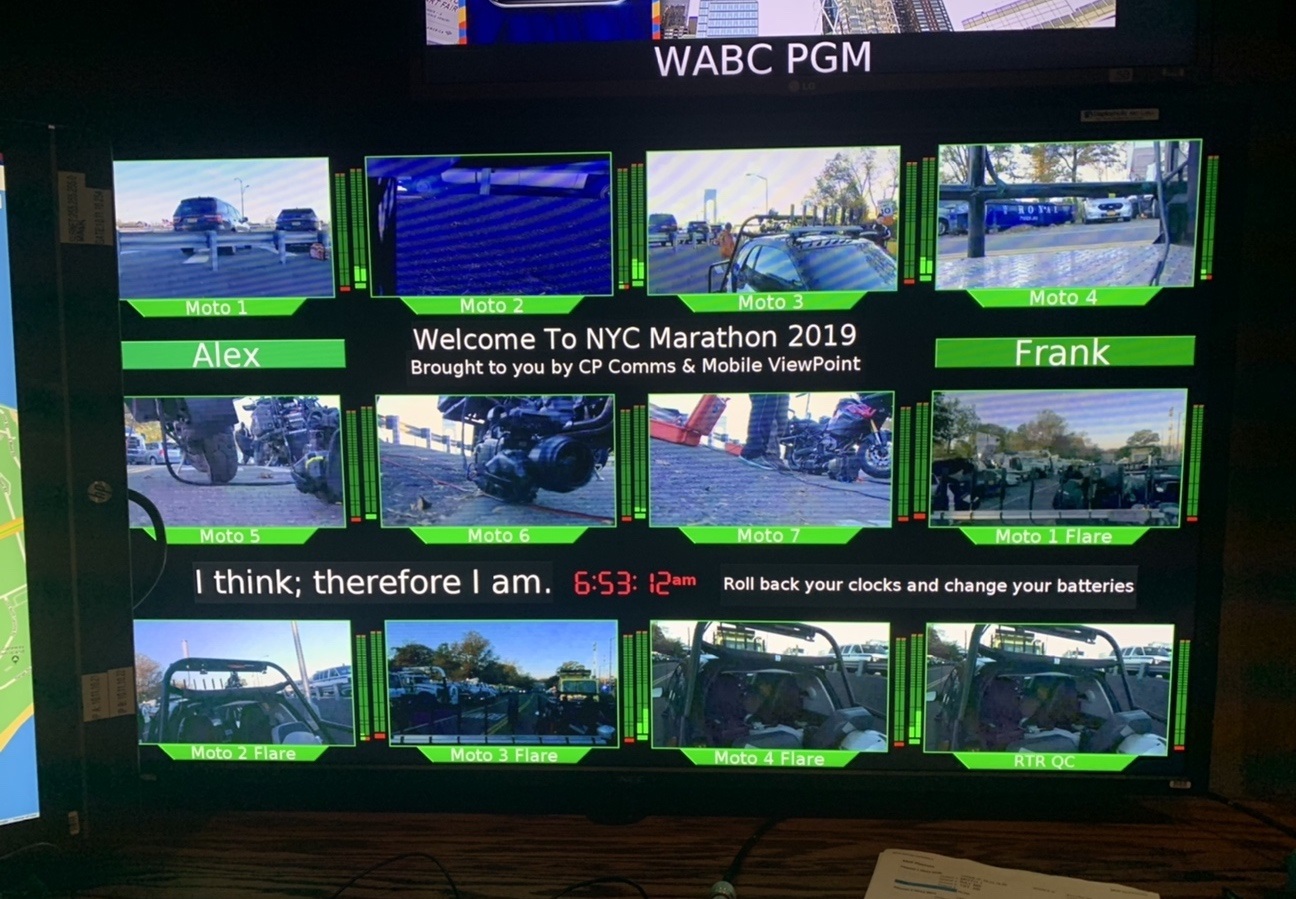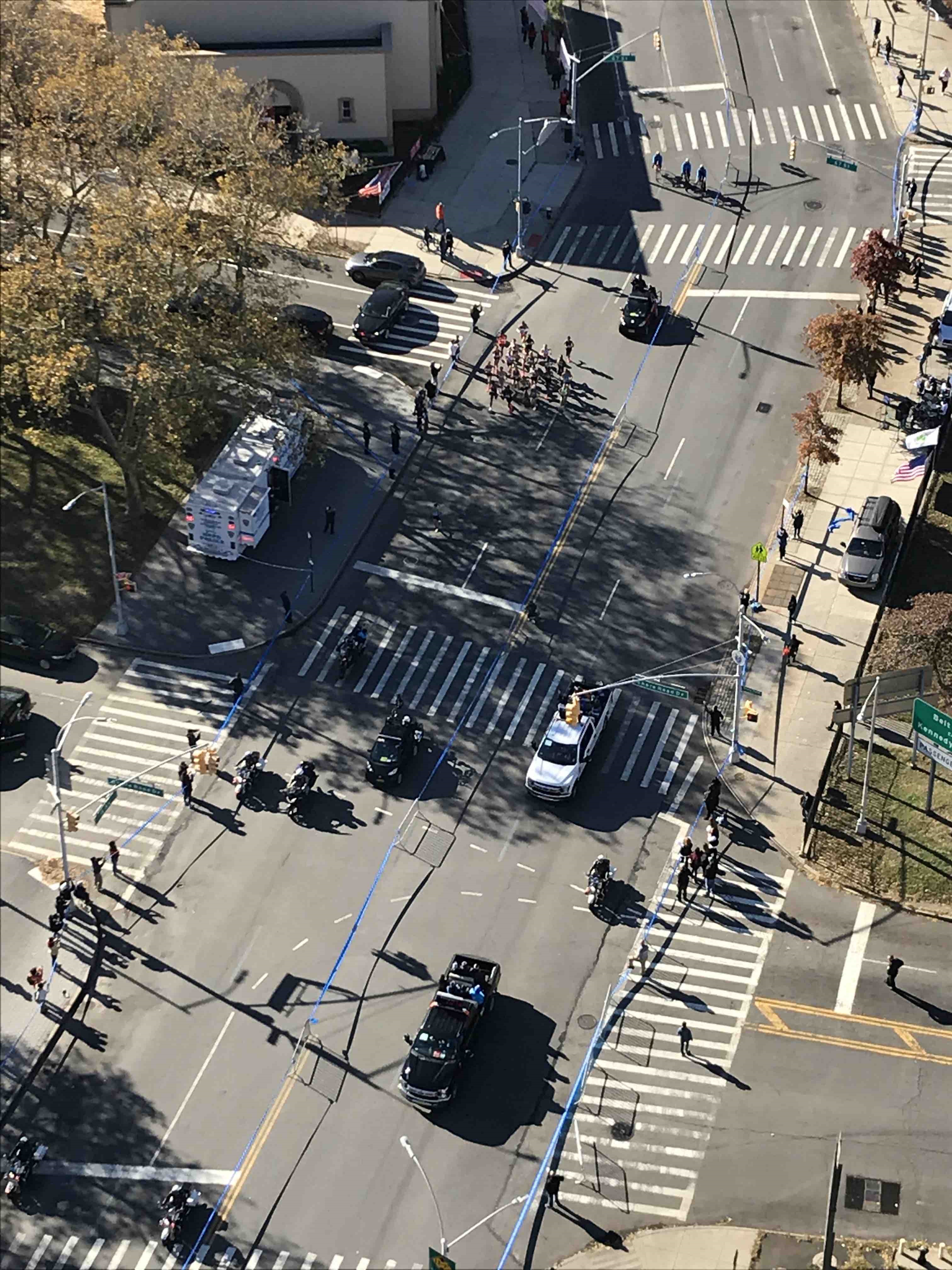CP Communications Goes 100% IP for New York Marathon Contribution
NEW YORK—For three years, live event production services provider CP Communications has been transitioning from traditional microwave technology to IP and bonded cellular network contribution to cover the New York City Marathon—but 2019 was different.

This year’s race, Nov. 3 through the boroughs of Staten Island, Brooklyn, Queens, the Bronx and Manhattan, was the first time CP Communications relied entirely on IP and bonded cellular networking to provide live coverage of the Men’s and Women’s races of the TCS New York City Marathon, CP Communications said.
CP Communications credits growing bandwidth and network availability as an impetus for completing the switchover to the more cost-efficient IP and network alternative to traditional RF live shots.
In its 25th year of marathon coverage, CP Communications used many of the same platforms and technologies as it has for previous marathons while revising aspects of its technical infrastructure and production workflows. The company leveraged the expansive fiber network throughout New York City to reduce its reliance on traditional video transmission circuits, the company said.
CP Communications deployed four cars and three motorcycles equipped with stabilized mounts and lenses as well as a POV camera for talent installed on two of the cars.
Mobile Viewpoint Agile Airlink encoders captured and streamed the live action via bonded cellular with bandwidth-efficient H.265/HEVC video encoding back to the CP Communications HD-21 production truck, located at the finish line.
CP Communications also relied on the encoders at two rooftop locations in Brooklyn and Manhattan, and at three REMI (Remote Integration Model) production locations in Brooklyn, Manhattan and the Bronx, it said.
Get the TV Tech Newsletter
The professional video industry's #1 source for news, trends and product and tech information. Sign up below.
On board HD-21, CP Communications personnel monitored bitrates and dataflow from all Agile Airlink devices, as well as signals leaving the truck through its 24x24 routing infrastructure.
The Agile Airlinks at the REMI sites were used for live interviews with racers, race organizer New York Road Runners (NYRR) spokespeople and others throughout the day.
Traditional microwave links at the rooftop locations were available as backups in the event of cellular network congestion at the start and finish lines, CP Communications said.
This year’s coverage also marked the first time CP Communications relied on Mobile Viewpoint 2K4 playout servers at each rooftop and REMI site, which made it possible to route any signal between the five locations.
The servers also enabled CP Communications to send IFB return to each vehicle and location. Mics were embedded locally at every site to ensure lip sync with video was maintained.

“Having return video to the cars over the entire course was an important step forward, and overall we had a valuable return system to move video, audio and other signals between all of our acquisition points,” said CP Communications Technical Manager Frank Rafka.
“This was one of the biggest changes to the infrastructure this year, as we could seamlessly monitor all locations and dynamically make changes as necessary—a major benefit of managing IP encoding in the cloud. The hotspots and cellular networks associated with Mobile Viewpoint technology made it very easy to achieve.”
A Dante network was deployed on board HD-21 to manage and deliver vehicle and REMI audio to broadcasters. RTS OMNEO intercoms linked HD-21 to the host broadcaster, which allowed seamless communications throughout the TV broadcast compound.
Separately, CP Communications used a Unity intercom system deployed over the cellular network, allowing NYRR personnel and spotters along the course to communicate with the broadcast compound.
All video and audio signals were delivered from HD-21 to an NEP broadcast truck at the finish line using a MultiDyne VF-9000 fiber transmission system. NEP produced world feed uplinks as well the domestic national broadcast for ESPN2.
A CP Communications team also wrote custom software to interpret data and GPS locations from 28 inbound signals to HD-21. When transposed over a Google map, the data provided information as the race proceeded into areas with challenging cellular coverage.
“These technologies and workflows, along with overall better network bandwidth and availability, made it possible to leverage a 100% modern network infrastructure to cover this year’s event,” said CP Communications CEO Kurt Heitmann.
Phil Kurz is a contributing editor to TV Tech. He has written about TV and video technology for more than 30 years and served as editor of three leading industry magazines. He earned a Bachelor of Journalism and a Master’s Degree in Journalism from the University of Missouri-Columbia School of Journalism.

